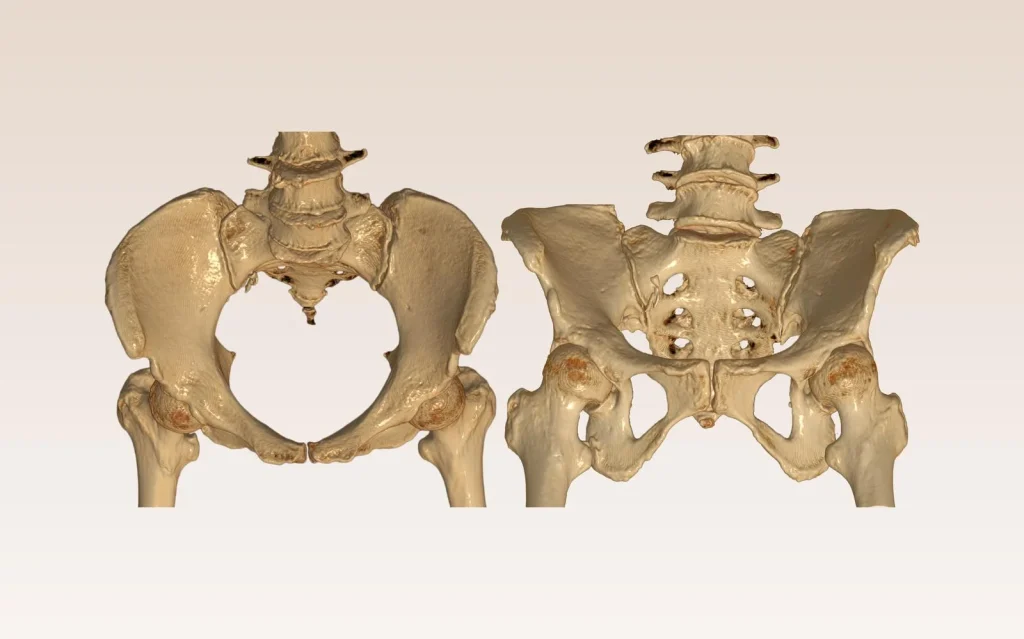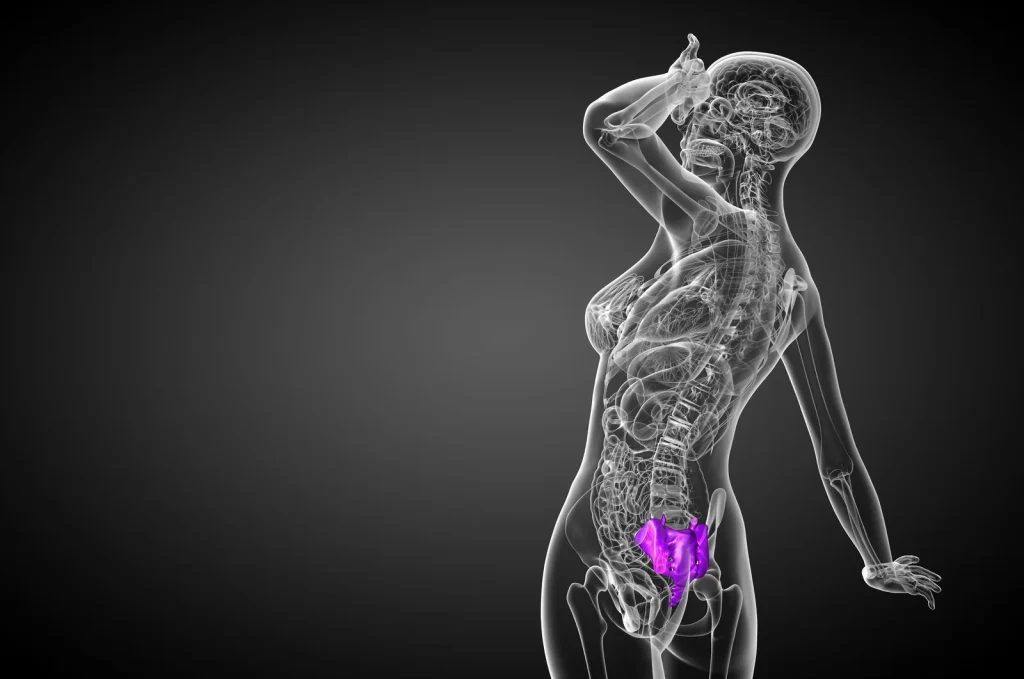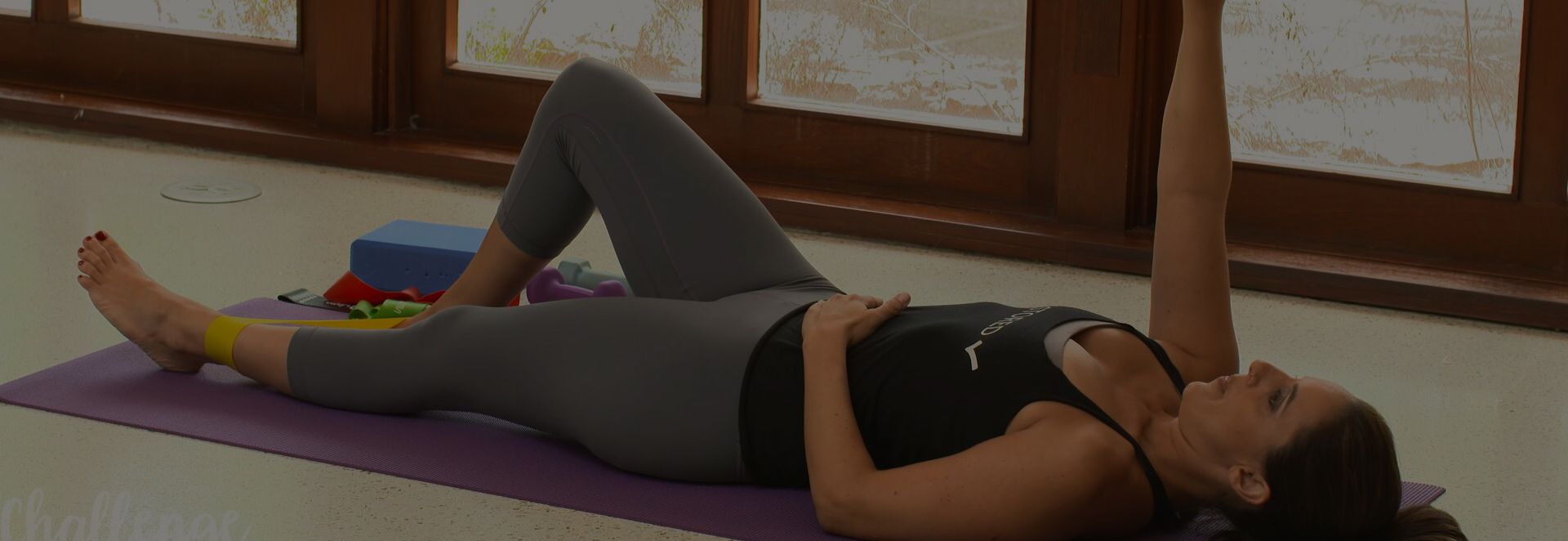Resources
- The Connection Between Exercise and Bloating: What Every Professional (and Their Clients) Need to Know
- How to Strengthen Pelvic Floor Safely
- Pelvic Floor Exercises for Constipation: Awareness, Movement, and Nervous System Relief
- High-Tone Pelvic Floor Dysfunction: Symptoms, Causes & Relief Tips
- How Menopause Affects the Pelvic Floor: Symptoms, Support & Hormonal Impact
- Tailbone Wagging for Tailbone Pain Relief and Pelvic Floor Mobility
- The Power of Tremoring: How Tension Release Exercises Support Your Nervous System
- Pelvic Floor Postpartum Exercises for Faster Recovery
- Navigating Coccyx Pain in Pregnancy: A Trimester-by-Trimester Guide
- Pilates and Pelvic Floor Dysfunction: Is It the Solution You’re Seeking?
- 5 Pilates Pelvic Floor Exercises You Don’t Want to Leave Out
- Pelvic Floor Massage: A Comprehensive Guide
- Does Pilates Strengthen Pelvic Floor Muscles? A Comprehensive Guide
- Hypermobility and Pelvic Floor Health: What You Need to Know
- The Foot to Pelvic Floor Connection: A Whole-Body Approach to Movement and Health
- Understanding Pelvic Floor Pain After Running: Causes and Solutions for Professionals
- Top 5 Exercises to Strengthen the Pelvic Floor
- Do Squats Strengthen Pelvic Floor Muscles? Insights for Movement Professionals
- How Pelvic Floor Health Is Related to the Process of Moving from Arousal to Orgasm
- 5 Things I Wish People Knew About Your Pelvic Floor & Orgasm
- Pelvic Floor Tension: Everything You Need to Know
- How Running and Pelvic Floor Health Are Interconnected: What Every Runner Should Know
- Does Running Strengthen Pelvic Floor Muscles? Myths vs. Facts
- Understanding Urine Leakage Causes: Why It Happens and How to Manage It
- How to Strengthen Your Pelvic Floor: The Ultimate Guide
- Strengthening and Restorative Yoga Poses for Full Body Health
- Understanding Queefing: Causes, Symptoms, and Simple Prevention Tips
- How Do You Know if You Have a Weak Pelvic Floor
- What Does Pelvic Floor Pain Feel Like?
- How Can I Strengthen My Pelvic Floor Without Kegels?
- Pelvic Floor Stretches | 5 Quick Ways To Relax Your Pelvis
- Pelvic Floor Specialist | Finding Help To Heal Your Pelvis
- Is Pelvic Floor Repair Major Surgery? | Pelvic Health Guide
- Pelvic Floor Exercise
- How to Strengthen Pelvic Floor
- Pelvic Floor Therapy | Improving Your Pelvic Health
Resources
- The Connection Between Exercise and Bloating: What Every Professional (and Their Clients) Need to Know
- How to Strengthen Pelvic Floor Safely
- Pelvic Floor Exercises for Constipation: Awareness, Movement, and Nervous System Relief
- High-Tone Pelvic Floor Dysfunction: Symptoms, Causes & Relief Tips
- How Menopause Affects the Pelvic Floor: Symptoms, Support & Hormonal Impact
- Tailbone Wagging for Tailbone Pain Relief and Pelvic Floor Mobility
- The Power of Tremoring: How Tension Release Exercises Support Your Nervous System
- Pelvic Floor Postpartum Exercises for Faster Recovery
- Navigating Coccyx Pain in Pregnancy: A Trimester-by-Trimester Guide
- Pilates and Pelvic Floor Dysfunction: Is It the Solution You’re Seeking?
- 5 Pilates Pelvic Floor Exercises You Don’t Want to Leave Out
- Pelvic Floor Massage: A Comprehensive Guide
- Does Pilates Strengthen Pelvic Floor Muscles? A Comprehensive Guide
- Hypermobility and Pelvic Floor Health: What You Need to Know
- The Foot to Pelvic Floor Connection: A Whole-Body Approach to Movement and Health
- Understanding Pelvic Floor Pain After Running: Causes and Solutions for Professionals
- Top 5 Exercises to Strengthen the Pelvic Floor
- Do Squats Strengthen Pelvic Floor Muscles? Insights for Movement Professionals
- How Pelvic Floor Health Is Related to the Process of Moving from Arousal to Orgasm
- 5 Things I Wish People Knew About Your Pelvic Floor & Orgasm
- Pelvic Floor Tension: Everything You Need to Know
- How Running and Pelvic Floor Health Are Interconnected: What Every Runner Should Know
- Does Running Strengthen Pelvic Floor Muscles? Myths vs. Facts
- Understanding Urine Leakage Causes: Why It Happens and How to Manage It
- How to Strengthen Your Pelvic Floor: The Ultimate Guide
- Strengthening and Restorative Yoga Poses for Full Body Health
- Understanding Queefing: Causes, Symptoms, and Simple Prevention Tips
- How Do You Know if You Have a Weak Pelvic Floor
- What Does Pelvic Floor Pain Feel Like?
- How Can I Strengthen My Pelvic Floor Without Kegels?
- Pelvic Floor Stretches | 5 Quick Ways To Relax Your Pelvis
- Pelvic Floor Specialist | Finding Help To Heal Your Pelvis
- Is Pelvic Floor Repair Major Surgery? | Pelvic Health Guide
- Pelvic Floor Exercise
- How to Strengthen Pelvic Floor
- Pelvic Floor Therapy | Improving Your Pelvic Health
Understanding Coccyx Pain: Symptoms, Causes, Healing and Prevention
By Lauren Ohayon 02/07/2025
6 Min Read
Coccyx Pain Relief is Possible
Your coccyx–more commonly known as the tailbone–is tiny, but pain in this area can be intense and disruptive to daily life. This article will help you understand the causes of coccyx pain, explore effective healing methods, and outline prevention strategies to help you manage and relieve discomfort.
Coccyx Pain and Impact on Daily Life
A sharp, nagging pain in the butt that flares up when you sit down or when you rise from a chair can range from a mild annoyance to a persistent discomfort that interferes with daily activities. For some, it’s an occasional irritation, while for others, it can be debilitating, making sitting, standing, and even basic movements challenging. Understanding the causes of this pain and how to manage it effectively can help restore comfort and improve quality of life.
Coccyx pain, also referred to as coccydynia, is less frequently diagnosed than it should be. Its effects on daily life, depending on the severity and cause of the pain, can be completely disabling. However, treatments are available, and many cases of coccyx pain can resolve relatively easily. Let’s explore coccyx pain, what the potential causes are, and what you can do about it.
Exploring the Coccyx
Anatomy of the Coccyx

As you can see above, the coccyx extends from the bottom of the sacrum, curling into the body like a tucked-under tail. The coccyx is not just one bone; it’s a continuation of the spine, and depending on an individual’s anatomy, the bones may or may not be fused. The primary role of the tailbone is to help provide stability to the body in a seated position; however, it is also an insertion point for several pelvic floor muscles and connective tissues and is responsible for supporting the position of the anus. In childbirth, the coccyx and the sacrum move to help ease the passage of the baby through the pelvis.
The coccyx, or tailbone, has a more limited range of motion compared to the rest of the spine, but, like the spine, it must adapt to the body’s movements. The muscles of the pelvic floor play a key role in this. When there is an uneven or poor distribution of body weight, the pelvic floor muscles can create unnecessary pressure or tension on the coccyx. As a result, you may experience discomfort or pain, particularly during activities such as sitting or standing. Optimal pelvic floor function is crucial for reducing strain on the coccyx and surrounding areas.
Defining Coccyx Pain
Coccyx pain often presents as a deep, aching discomfort near the base of the spine, just above the anus. While some individuals describe it as a dull, persistent ache, others experience a sharp, stabbing, or bruised sensation that intensifies with movement or prolonged pressure. This discomfort is often most noticeable when sitting on hard surfaces, transitioning from sitting to standing, or after standing for extended periods.
Coccyx pain can be constant or intermittent, with symptoms worsening in response to pressure, certain postures, extended periods of inactivity, and stress. Long car rides, prolonged desk work, or even lying in certain positions may exacerbate discomfort. For some, the pain eases with movement, while for others, it can persist throughout the day, making even routine activities uncomfortable and limiting mobility.
Though the pain is typically localized around the tailbone, it may also radiate into surrounding areas, such as the buttocks, lower back, or perineal region (the space between the anus and genitals). This happens because the coccyx shares nerve pathways and muscular connections with the lower back and pelvic floor, making it harder to pinpoint the exact source of discomfort. Some individuals also report a sensation of fullness, deep soreness, or tightness in the pelvic floor, particularly when pelvic floor tension is a contributing factor.
Causes of Coccyx Pain
Acute coccyx pain usually occurs due to trauma and injury, which can be either external or internal. External trauma typically occurs from a fall directly onto the tailbone or buttocks, causing bruising, inflammation, or even dislocation. Internal injuries to the coccyx are most commonly associated with childbirth, particularly when assisted by forceps or vacuum extraction, which can put excessive pressure on the area.
Although fractures or breaks of the coccyx are rare, they can be detected through imaging if suspected. Additionally, body weight changes can influence coccyx pain—higher body weight increases pressure on the tailbone, while significant weight loss may reduce the natural cushioning between the coccyx and seating surfaces, leading to increased sensitivity and discomfort.
Poor postural habits can also be a major factor in coccyx pain. A slouched posture increases pressure on the tailbone. At the same time, a habitual posterior tilt (tucking the pelvis under while sitting) can shorten the pelvic floor muscles, causing excessive tension that pulls on the coccyx.
Certain movement patterns, such as habitual glute clenching, excessive core bracing, or prolonged gripping of the pelvic floor muscles, can also create chronic tension that pulls on the coccyx and surrounding tissues.
Coccyx pain can occur during pregnancy due to the additional loads placed on the pelvis and pelvic floor. Coccyx pain is also relatively common after birth, as the tailbone plays an important role in creating space for the baby to pass through the birth canal. If the tailbone is unable to move freely, it can become strained or injured.
Other factors that can contribute to coccyx pain include either hypermobility or a lack of mobility in the joints, infections or tumors affecting the coccyx, and degenerative joint disease such as arthritis. Certain medical treatments, particularly radiation therapy for pelvic cancers, may lead to coccyx discomfort.

How to Heal and Manage Coccyx Pain
While a healthcare provider should evaluate persistent or severe coccyx pain, many people find relief through a combination of basic exercise and pain relief principles.
At-Home Treatment for Coccyx Pain
- Use a pressure-reducing pillow (donut or wedge) when seated on hard surfaces
- Adjust how you sit down and stand up (hinge at the hips rather than tucking your pelvis)
- Over-the-counter anti-inflammatories, such as ibuprofen, under the guidance of your physician
- Ice, heat, or warm baths can help relieve discomfort and muscle tension
- Exercises that promote pelvic floor mobility and reduce excessive tension
- Adjusting your postural habits throughout the day
- Avoid constipation and straining during bowel movements
Medical and Professional Treatment Options:
Medical treatments range from noninvasive options to surgical procedures. Your healthcare provider will perform a manual exam to check for any growths or swelling before recommending next steps.
- Physical therapy is a common treatment for tailbone pain. A pelvic health physical therapist can treat both the presenting pain and determine whether there are underlying muscular imbalances in the muscles of the pelvic floor. For physical therapy to be effective, it is essential that you do the exercises that are prescribed
- Manipulation of the tailbone and other tissues may be part of your treatment plan as well. This involves techniques like massage to help reduce tension in the muscles attaching to the tailbone
- Corticosteroid injections for severe, persistent pain may also be considered. This involves injecting anti-inflammatory medication into the affected area to reduce swelling and irritation around the tailbone, helping to alleviate discomfort and improve mobility
- Both TENS therapy and acupuncture can be effective in managing coccyx pain by targeting the nervous system and reducing muscular tension
- Surgical treatments are the most invasive and are typically considered when all other conservative treatments have failed to provide relief. Surgical procedures may involve full or partial removal of the coccyx (coccygectomy), depending on the severity of the condition. While surgery can offer long-term pain relief for some, recovery can take several months, and outcomes vary. Due to the complexity and potential risks, surgical intervention is a last resort
Prevention of Coccyx Pain
Ergonomic Adjustments and Lifestyle Changes
Making small shifts in your workspace can help prevent a recurrence of coccyx pain. Ensure that your seat provides enough padding and allows your pelvis to be well-supported in a neutral, not tucked, position. Taking regular walking and standing breaks (setting a timer or an alarm to remind you) can also help prevent sliding into postural slouching while you focus.
Lifestyle changes that can help prevent tailbone pain include:
- Reducing your risk of falls at home by clearing pathways and eliminating tripping hazards
- Change up exercise habits to put less pressure on your tailbone–if you’re a cyclist, for example, you may wish to work with a physical therapist to change your technique and get a proper bike fitting at your local bike store
- Eat a diet that promotes regular, easy bowel movements to reduce internal pressure on the tailbone
Posture and Movement
Learning to sit, stand, and move in ways that support proper posture and ease of movement is essential for preventing or managing chronic coccyx pain. If there is underlying pelvic floor or core tension at the root of your coccyx pain, it’s possible that you are also experiencing other pelvic floor dysfunction symptoms.
Correcting the postural patterns that cause tension in the pelvic floor and tailbone pain can take time. My 12-week Restore Your Core® program helps you recognize those patterns while strengthening your whole core system. When pelvic floor tension is the cause of tailbone pain, a whole-body approach to healing is essential. However, you might find relief from stand-alone exercises like this side lunge or the movements demonstrated in this YouTube video:
My approach to addressing coccyx pain focuses on whole-body wellness rather than spot-treating symptoms. I start by improving blood flow to the coccyx area, which can promote healing and reduce inflammation. Part of addressing and preventing coccyx pain is strengthening the supporting muscles around the tailbone, including the pelvic floor and core. I also work on enhancing overall posture and alignment, as poor posture can often contribute to tailbone discomfort. Lastly, I emphasize promoting the relaxation of tense muscles in the area, as tension can exacerbate pain. As you practice these movements, it’s crucial to approach them with mindfulness and self-compassion.
Coccyx Pain Symptoms Can Be Managed
To sum up, if you are experiencing coccyx pain long past an injury, reach out to your healthcare provider. You do not have to suffer indefinitely, and the sooner you begin taking steps to manage and resolve your coccyx pain, the sooner you’ll be able to get back to doing the things you love to do. You can start with the home treatments and exercise recommendations above, but if your pain persists, ask your doctor or physical therapist for help. Relief is possible, and you deserve to move pain-free.
FAQ
1. What is the main function of the coccyx bone in the body?
The coccyx, or tailbone, is the small, triangular bone at the base of the spine. It serves as an attachment point for various muscles, tendons, and ligaments that support movement, stability, and posture. Additionally, it plays a role in weight distribution while sitting.
2. How can I differentiate between coccyx pain and lower back pain?
Coccyx pain (coccydynia) is typically felt at the very bottom of the spine, directly above the anus, and is often worsened by sitting, transitioning from sitting to standing, or direct pressure on the area. Lower back pain, on the other hand, usually affects the lumbar region and may radiate into the legs or hips.
3. Can stress or emotional factors worsen coccyx pain?
Yes, stress and emotional tension can contribute to increased muscle tightness and sensitivity in the pelvic and lower back region, which may aggravate coccyx pain. Additionally, stress-related behaviors like poor posture or prolonged sitting can worsen symptoms.
4. How long does it typically take for coccyx pain to heal with at-home treatments?
Mild to moderate coccyx pain often improves within a few weeks to a few months with at-home treatments such as using a cushion, avoiding prolonged sitting, applying ice or heat, taking over-the-counter pain relievers, and implementing exercises to address pelvic floor tension. However, chronic cases may take longer and may require medical intervention.
5. What are the potential risks of untreated coccyx pain?
If left untreated, coccyx pain can become chronic, leading to ongoing discomfort, difficulty sitting, and impaired mobility. It may also contribute to compensatory posture changes, which can cause secondary issues like hip or lower back pain.
6. Are there any dietary changes that can help reduce coccyx pain?
Yes, maintaining a diet rich in anti-inflammatory foods, such as leafy greens, fatty fish, nuts, and berries, may help reduce inflammation and discomfort. Additionally, staying hydrated and consuming fiber-rich foods can prevent constipation, which reduces strain on the coccyx during bowel movements.



